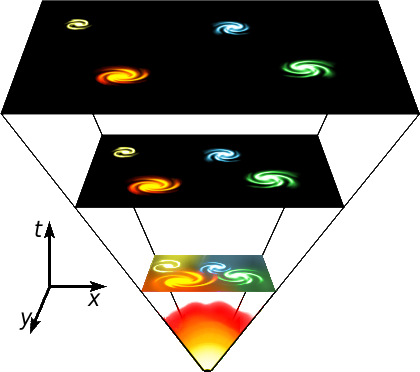Monday, March 12, 2012
While looking into information on black holes, I stumbled across a few interesting things. First is the existence of what are known as stellar black holes, or stellar mass black holes, which are formed by the collapse of extremely large and massive stars. Going off of this, I also read a bit about hypothetical primordial black holes. While formation of black holes requires a great deal of mass that can typically only be found in stars in the current state of the universe, certain conditions in the early universe following the big bang could have allowed for what are known as primordial black holes. In theory, due to the extreme density of matter during the early formation of the universe, potentially, a primordial black hole could be formed without the collapse of a star. The theoretical formation of primordial black holes has been proposed as an explanation for dark matter. This then leads into discussion of the big bang theory (not the tv show.)
Using general relativity, with observations of the various aspects of the universe (including expansion rate, the amount of matter, etc.), theoretically, at some point in time (around 13.7 billion years ago) the universe consisted of a singularity - a point of infinite density and temperature. Following this, during the Plancks Epoch (the moment of the big bang, about time = 0 to 10e-43 seconds) was a period consisting of extremely high energy and density, where quantum effects of gravity were as significant as other forces, leading to the possibility of a unification of forces. The transitions between various phases of the initial expansion occurred very rapidly, with the temperature dropping drastically as expansion continued, leading to the conversion of matter. During the exponential expansion period, an excess of quarks and leptons began to emerge over antiquarks and antileptons, leading to the current state of the universe in which matter far outnumbers antimatter. A few minutes into the expansion came the moment when matter combined to form hydrogen, the most abundant element in the universe. Following this, after hundreds of thousands of years, denser regions of material began to combine, eventually leading to the formation of stars, galaxies, etc. From that point on, the universe began to "settle down" and eventually, along came earth. Of course, this is all theoretical and based on observations and understanding of physics. Still, I think it's pretty cool, and kinda makes sense. I wonder what came before the big bang then...?
Subscribe to:
Post Comments (Atom)

No comments:
Post a Comment